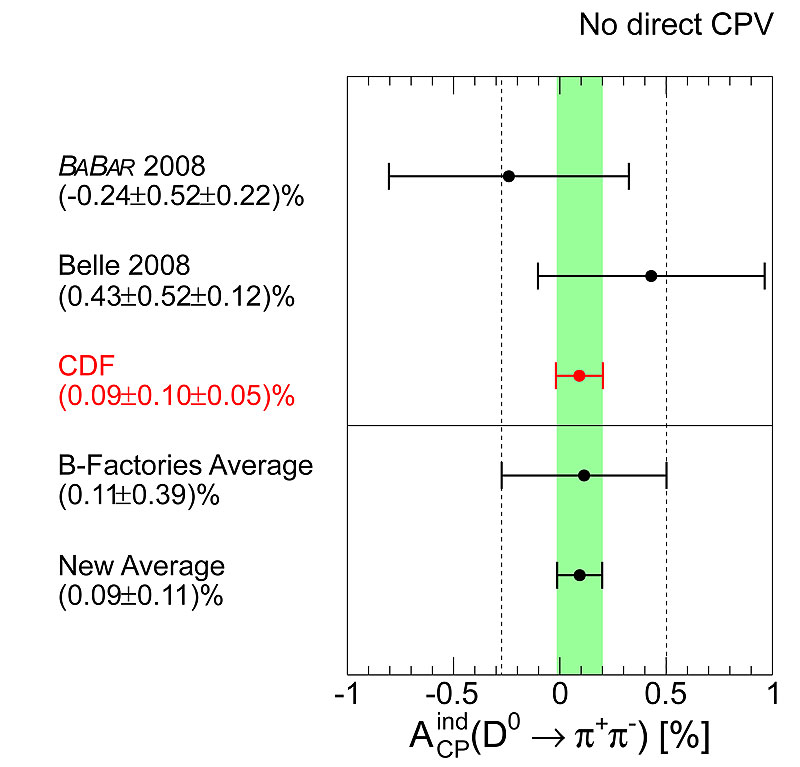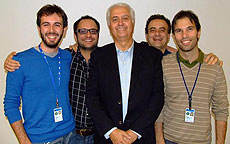Collider Detector at Fermilab or Charm decay factory?
 |
| This is a comparison of the indirect CP violation observed by CDF and previous best results.
The green band indicates the average of all these measurements.
|
In 1979, a group of American, Japanese and Italian scientists began designing the Collider Detector at Fermilab (CDF), aimed at discovering the heavy carriers of the weak force, called W and Z particles. It turns out that CDF arrived slightly late for Ws and Zs, but the detector soon earned its spot in the particle physics race by discovering the heaviest elementary particle known to this day – the top quark.
At the start, nobody had a clue that CDF, optimized for detecting heavy particles, could become a fantastic instrument for precision charm physics in messy proton-antiproton collisions.
The charm quark is a cousin of the top quark, but it’s more than 100 times lighter. The Standard Model predicts that the laws governing charm decays differ if the particles are replaced with antiparticles and observed as the mirror image of the decay. However, the differences, called CP violation, are so tiny that no one has observed them so far.
Now, a team of CDF scientists searched for the tiny differences by analyzing hundreds of thousands of neutral charm decays into pairs of charged kaons and pions, sifting through roughly 10 thousand billion proton-antiproton collisions from the Tevatron.
The results have a tiny uncertainty (2-3 parts per thousand), which makes them twice as precise as any previous result.
This achievement is due to the innovative trigger-like device dedicated to identifying charm particles in real time. Also, CDF scientists use a thorough analysis to account for any spurious differences between charm and anti-charm due to the detector being made of matter and not antimatter.
No CP violation was found, which provides stringent constraints for the possible masses and interaction strengths of many hypothetical new, non-Standard Model particles. The CDF results sit in the middle, between the Standard Model prediction and preliminary findings by LHCb, a dedicated CERN experiment that recently reported evidence for charge-parity violation in these decays.
Learn more
—Edited by Andy Beretvas and
Diego Tonelli
 |
|
These CDF physicists contributed to this data analysis.
From left: Angelo Di Canto, INFN Pisa; Diego Tonelli, Fermilab; Luciano Ristori, INFN Pisa; Giovanni Punzi, Pisa University and CDF co-spokesperson; Michael J. Morello, INFN Pisa.
|
|